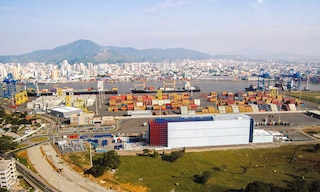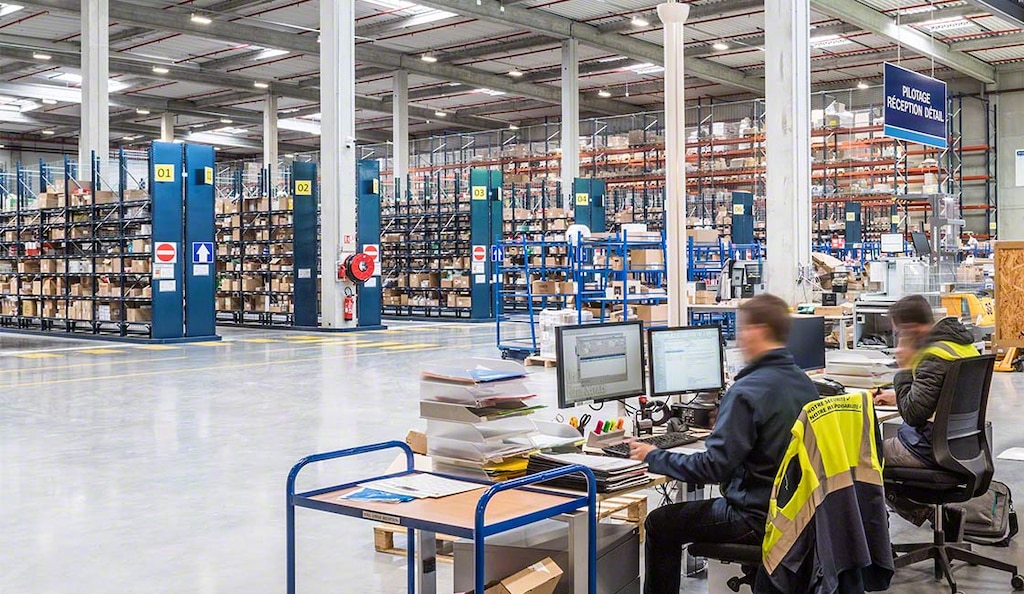
Fulfilment centres: types and characteristics
When a business starts to take off, it might not have enough resources to accommodate all its inventory. Similarly, it might lack the staff to fill the increasing order volumes. But there’s good news: an outside alternative can enable the company to continue providing top-rate customer service.
What is a fulfilment centre?
A fulfilment centre is a hub where logistics service providers engage in activities relating to transport and distribution. They typically have differentiated areas for different types of products and computer systems to manage inventories. fulfilment centres are usually owned by 3PL (third-party logistics) service providers and strategically located close to major air, sea, rail and road routes. Their purpose is to receive goods, classify them and store them for short periods before delivering them to end customers as quickly as possible.
What does a fulfilment centre do?
These spaces — which include warehouses, yards, intermodal transport hubs and offices — are responsible for performing these functions:
- Goods receipt
- Intake and logging of new items
- Short-term storage
- Picking
- Packing
- Last-mile delivery
- Returns management (reverse logistics)
Characteristics of a fulfilment centre
Although there are various types and there may be differences among them, fulfilment centres tend to share some common characteristics:
- They are designated spaces where multiple 3PL providers work.
- These companies can own or lease the fulfilment centre’s buildings, machinery and facilities.
- They operate under a free competition framework and are usually managed by a single entity, which can be public or private.
- They handle both national and international transport.
- They are intermodal and offer their potential clients large spaces.

Differences between a fulfilment centre and a warehouse
Although they perform different functions, these two types of facilities are sometimes confused due to the similarities between some of their processes:
| Warehouse | Fulfilment centre |
|---|---|
| Usually belongs to a single owner and user | Typically used by various companies |
| Space used to house raw materials and products for long periods and perform picking, packing and shipping for specific businesses | Hub that carries out storage, picking, packing and order fulfilment for several clients |
| Used by wholesalers, manufacturers, large retail chains, transport providers and import/export companies, among others | Organisations outsource their storage and order fulfilment operations to the 3PLs in these facilities |
| Does not serve external clients | Provides service to external clients and manages exchanges and returns |
In addition, warehouses tend to be located in industrial areas or near transport hubs. By and large, they’re outfitted with loading docks and material handling equipment. Part of their space can be climate-controlled to accommodate refrigerated or frozen goods.
Benefits of a fulfilment centre
Leveraging fulfilment centres can have numerous advantages for businesses such as e-commerce retailers:
- Faster, more efficient shipping. This is possible due to their specialised infrastructure and strategic location.
- Cost savings. Their high volume of activity allows them to offer special rates.
- Flexibility and scalability. They adapt easily to changes in their clients’ demands.
- Improved customer satisfaction. The comprehensive service they offer for orders and returns, along with faster shipping, strengthens relationships with users.
Choosing the right fulfilment centre for your business
Selecting the most appropriate partner is essential to ensure that logistics operations go smoothly. After all, this will have a direct impact on customer service and deliveries. These are some aspects to consider:
Technology
An efficient fulfilment centre has advanced inventory management systems compatible with the omnichannel strategy and the latest tools for addressing tasks carried out in these facilities. One example is autonomous mobile robots (AMRs) to transport goods in-house. Another is distributed order management (DOM) systems. These order management software programs are designed to optimise the choice of shipping locations for businesses with multiple distribution centres.

Specific needs
Before contracting a fulfilment centre, it’s advisable to calculate the orders you expect to receive each month. This will let you determine your required storage capacity. Likewise, you’ll need to take into account the final destination of your goods (national or international), their size and their characteristics. Not all fulfilment centres are equipped to handle all product types. If you work with fragile, large or high-value merchandise, you’ll have to contract a specialised facility.
Location
It’s preferable to choose a fulfilment centre close to the markets you operate in or in a strategic area. This will lower your delivery costs.
Types of fulfilment centres
There are several different kinds of fulfilment centres, each with different objectives:
- Logistics distribution platforms. These infrastructures are designed to offer freight delivery services to cities.
- Customs clearance centres. Located near border areas, these facilities are used for customs inspections.
- Industry cluster fulfilment centres. These warehouses carry out activities for a specific industrial sector and are located within the vicinity. They house finished or semi-finished products.
- Port-centric logistic zones. These refer to areas near maritime terminals where cargo is handled and distributed within a port’s scope. As multimodal facilities, they have good access to road networks and rail connections.
- Dry ports. These inland terminals are connected to the seaports they service by road and/or rail.
- Micro-fulfilment centres. Set up near urban consumption centres, these facilities primarily house direct commercial activities related to food. Therefore, they typically attract a high volume of customers.
- Agricultural logistics centres. These provide support for farming production.
- Air cargo centres. These logistics facilities specialise in processing air freight. They are located next to airports, with access to runways and road networks.
- Intermodal rail/road facilities. These centres handle transfers of goods between rail and road transport.
Technology for your fulfilment centre
When setting up your own fulfilment centre or warehouse, it’s essential to conduct a thorough analysis of the activities to be carried out. You’ll also need to determine the ideal location and select the tools to be used for material handling and inventory management.
Whatever your logistics challenge may be, at Mecalux, we have automation and software solutions to drive efficiency in all kinds of logistics centres. Contact us to find out which solutions will best suit your company’s processes and maximise your throughput.
